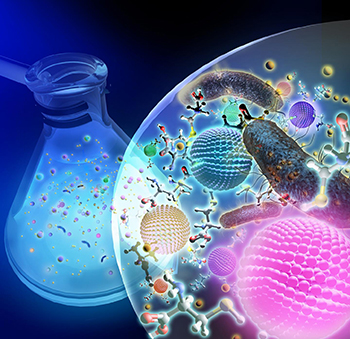
Biomanufacturing of CdS quantum dots. Credit: Linda Nye for Lehigh University
Engineers at Lehigh University (USA) report using bacteria to synthesize low-cost, environmentally friendly quantum dot (QD) nanocrystals (Green Chemistry, doi: 10.1039/C5GC00194C). The authors hope that their bacteria-mediated, water-based method will provide a viable pathway for other forms of “green” biomanufacturing that will replace current costly chemical synthesis methods that rely on toxic materials manufactured at high temperatures and pressures.
The scientists, led by Christopher Kiely, Bryan Berger and Steven McIntosh, used an engineered strain of bacteria, Stenotrophomonas maltophilia, and cadmium sulfide (CdS) to create inorganic QD nanocrystals with a mean particle size in the 2 to 4 nm range at ambient temperature and pressure. The resulting photoluminescent QDs can act as nanocrystal semiconductors with associated size-dependent bandgaps.
The Lehigh team says that their “environmentally benign” biomanufacturing method produces QDs at a cost of US$1 to US$10 per gram, where traditional chemical synthesis methods produce QDs at about US$1,000 to US$10,000 per gram. This drastic reduction in cost could allow for large-scale production of biosynthesized QDs for commercial applications.
S. maltophilia was chosen because of its intrinsically high resistance to heavy metals, including cadmium. The researchers confirmed the composition of the CdS nanocrystals with high-resolution scanning transmission electron microscopy, X-ray energy dispersive spectroscopy, and X-ray diffraction.
Semiconductor QDs, like the ones created by the Lehigh scientists, have a wide range of applications, including display technologies, in vivo and in vitro biomedical imaging and detection, solar cells, photocatalysts and optoelectronics. McIntosh says, “… harnessing nature to create functional inorganic materials will provide a pathway to a future environmentally friendly biomanufacturing-based economy. We believe that this work is the first step on this path.”
